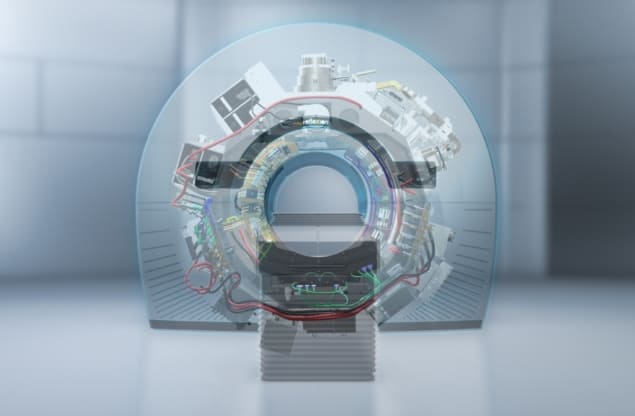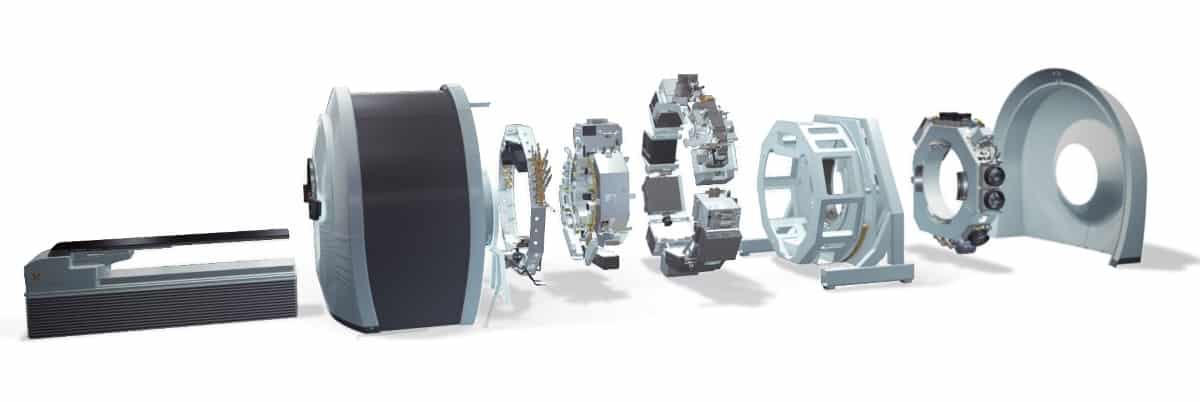
A new, biology-guided radiotherapy (BgRT) system could improve radiation therapy by delivering high dose to the target tumour while avoiding critical organs, according to a study by a radiation oncology research team at the City of Hope National Medical Center. The team simulated intensity-modulated radiotherapy (IMRT) treatments of patients with nasopharyngeal carcinoma (NPC), comparing these plans with those for other IMRT delivery techniques at the hospital.
The researchers created treatment plans for the BgRT system and compared these with helical tomotherapy (HT) and volumetric modulated arc therapy (VMAT) plans for 10 NPC patients who had received prior treatment at the hospital. They hypothesized that the unique delivery pattern of the BgRT system could enable superior beam modulation, which could improve the therapeutic ratio by lowering dose to critical organs. They note that even without utilizing the PET-guidance capabilities of the new system, this type of treatment for NPC patients may offer benefits comparable to those of proton therapy, which is not available to all due to the limited number of proton therapy centres.
The prototype treatment system, developed by RefleXion Medical, combines a compact 6 MV linac and a 16-slice CT with a ring gantry and integrates a PET subsystem to provide real-time tumour tracking. With a continuous rotation speed of 60 rpm, the gantry has much faster rotation than a HT machine. Its 64-leaf multileaf collimator (MLC) transitions 100 times per second to enable synchronized alignment with the linac pulse frequency. The system’s couch remains in a fixed position during radiation delivery, with multiple gantry rotations performed at each couch position, and advances in 2.1 mm steps when the beam is off.

After reviewing the patients’ original HT treatment plans, the team created VMAT and IMRT plans. Principal investigator Chunhui Han generated all the prototype IMRT plans for the BgRT system, which were optimized multiple times to achieve optimal dose homogeneity to all planning target volumes (PTVs) while adequately sparing critical organs. The researchers then compared all treatment plans using dosimetric parameters to PTVs and organs-at-risk (OAR). They report their findings in Medical Dosimetry.
Han and colleagues report that plans for the three modalities had comparable dose coverage, mean dose and dose heterogeneity to the primary PTV. Six of the seven mean dose parameters examined for OARs were lower in the prototype IMRT plans than in the HT or VMAT plans. “The average left and right parotid mean doses in the prototype plans were 10.5 Gy (35.5%) and 10.4 Gy (34.9%) lower than those in the HT plans, respectively, and were 5.1 Gy (21.1%) and 5.2 Gy (21.1%) lower than those in the VMAT plans, respectively,” they write.
However, IMRT plans for the prototype BgRT system had higher dose heterogeneity to non-primary targets. Han tells Physics World that the clinical impact of this is subject to debate and may vary case by case. “Compared to dose increase in non-primary targets, reduction in dose to critical organs is typically more important and desirable,” he explains. “The increased dose to non-primary targets will be more of an issue if they overlap with some critical organs and the dose increase is affecting sparing of critical organs.”
Treatment times were longer on the BgRT system, taking an average of 11.4±1.2 min, compared with 8.3 min for HT and 3.4 min for VMAT. Han believes that this will have limited impact in routine clinical radiotherapy. “A patient typically receives a 3D imaging scan and image-guided positioning corrections prior to the start of treatment,” he points out. “Since this BgRT system has a dedicated kilovoltage CT system with a fast gantry rotation speed, the pre-treatment scan time is a factor of two to three shorter than the time for a MVCT scan of the same length on a helical tomotherapy unit.”
The researchers note that radiotherapy treatment planning for NPC presents unique challenges in plan optimization, because many critical organs are in proximity to target volumes. As such, NPC can serve as a benchmark to evaluate intensity-modulation capabilities of a delivery system. “Improvements in critical organ doses with the prototype plans could have significant clinical impact on patient quality-of-life, such as minimizing the risk of stimulated salivary production,” they write.
Han and colleagues have been investigating the prototype BgRT system for several years. They are currently conducting an ongoing pre-clinical study to explore its use in treating metastases at various sites. They are also performing a retrospective review of historical patient imaging data, including PET data, to evaluate the feasibility and clinical benefits of using the PET feature of the BgRT system.



